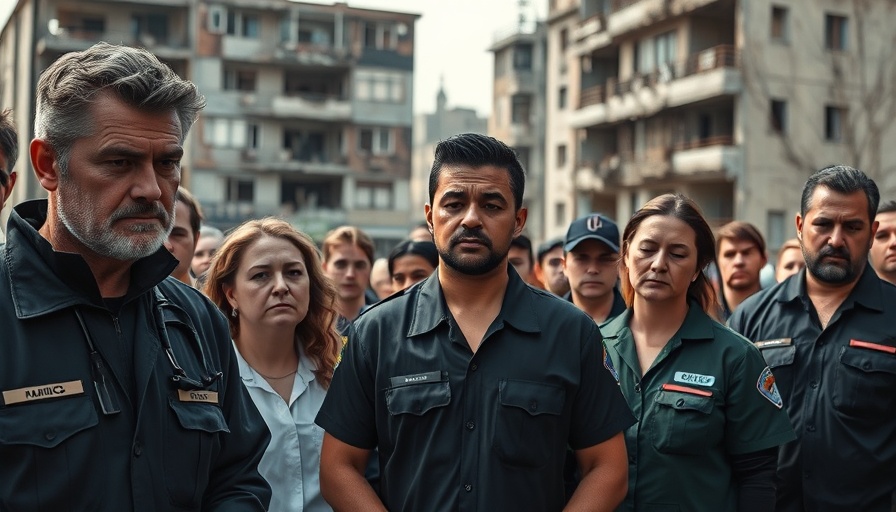
Understanding the Tragic Incident in Gaza
The recent Israeli investigation into the killings of 15 medics in Gaza has drawn significant public attention and condemnation. It revealed critical failures within the Israeli military's operational protocols that led to the loss of life of innocent medical responders. These findings contradict initial claims by Israeli forces that suggested the medics were in non-operational vehicles. As details emerged, cellphone footage provided irrefutable evidence that the ambulances were indeed marked and operating as emergency responders during the attack.
Timeline of Events: What Happened?
On March 23, 2025, a horrifying incident unfolded in the Tel al-Sultan district of Rafah. In the early hours, Israeli troops conducting military operations encountered ambulances responding to an emergency. Despite the ambulances displaying emergency lights and the Red Crescent emblem prominently, military personnel opened fire without hesitation. The attack left eight members of the Red Crescent, six Civil Defense workers, and a United Nations staffer dead. Following this execution, the bodies were reportedly bulldozed and buried in a mass grave, denying dignity and closure to the victims’ families.
The Aftermath: Military Response and Accountability
The military investigation concluded with a decision to dismiss a deputy battalion commander due to what was termed “professional failures.” This decision highlights a significant acknowledgment of operational failure within the military ranks, raising questions about accountability in warfare and the safety of humanitarian workers. The Israeli Defense Forces' initial narrative was compelling; they claimed that the medics’ vehicles lacked emergency signals. However, as legal and humanitarian organizations pushed for clarity, transparency demanded truth over rhetoric.
Wider Implications: The Effects on Medical Personnel in Conflict Zones
Attacks on medical personnel in conflict areas, such as Gaza, invoke strong international condemnation and spotlight humanitarian law violations. According to numerous reports from organizations like the World Health Organization (WHO), medical staff in such regions frequently face life-threatening risks while performing their duties. This incident serves as a reminder of the need to safeguard human rights and the protection of medical workers operating in war zones. The loss of these dedicated individuals impacts their families and the broader community, all of which relies on medical services amidst ongoing hostilities.
Global Reactions: Outrage and Calls for Action
The backlash following the investigation has been immense, with humanitarian organizations and international observers calling for thorough accountability and a re-evaluation of military engagement protocols in conflict zones. Human Rights Watch and the International Federation of Red Cross and Red Crescent Societies have urged Israel to uphold its commitment to protecting those who provide medical care during armed conflict. The international community is engaged in heated discussions about the protocols for military engagements and the pressing need for legislation that ensures greater protection for medical responders.
Future Outlook: Striving for Change
The tragic loss of these medics cannot go unaddressed. It brings to light the essential discussions surrounding training for military personnel, operational transparency, and adherence to international humanitarian law. For Israel, this incident presents an opportunity to reform military protocols to prioritize civilian protection and uphold the integrity of humanitarian work in high-stakes environments. Going forward, these events should serve as a clarion call for nations engaged in conflict to better educate their operatives on the critical importance of distinguishing between combatants and medical personnel.
 Add Row
Add Row  Add
Add 




 Add Row
Add Row  Add
Add 

Write A Comment